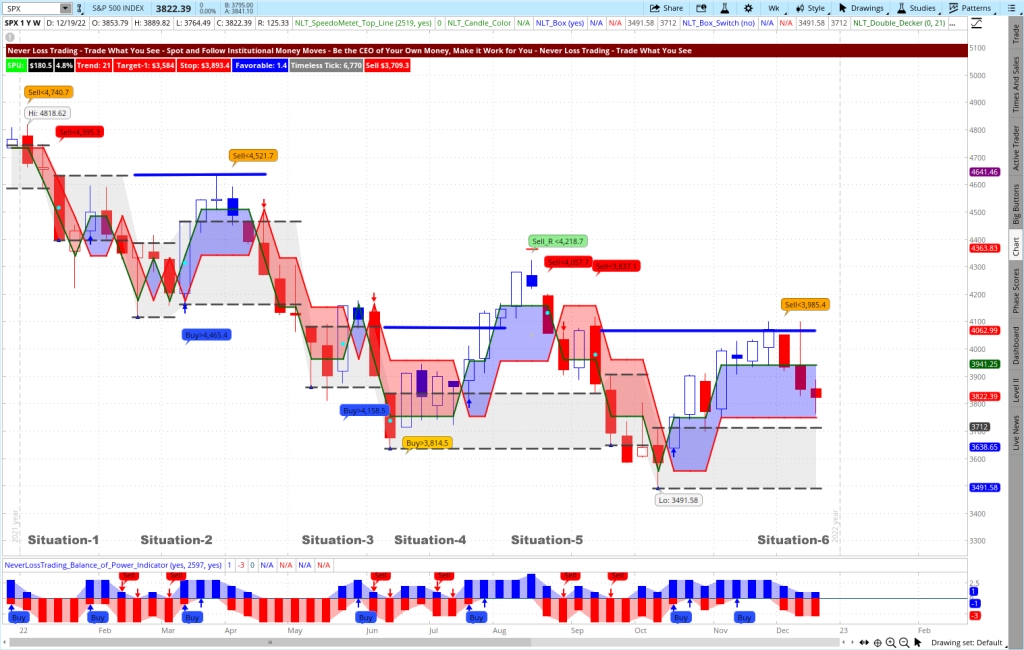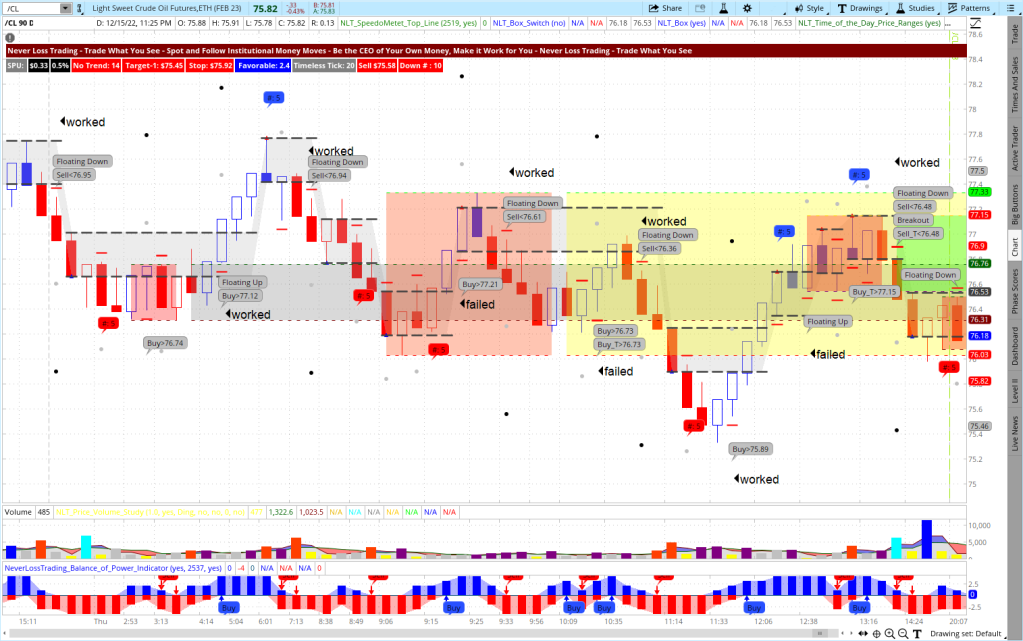Most traders experience daily fear, excitement, and indecision as a stimulus that compromises their capacity to trade effectively. Learning to handle your emotions builds the basis for living up to the needed performance in trading.

Trading brings a level of uncertainty about the outcome of your decisions, which you will rarely find in any other profession.
Winning is easy; losing has to be learned:
Fear is an emotional reaction in the brain that starts with a stressful stimulus and ends with the release of chemicals that cause a racing heart, fast breathing, and energized muscles, among other things, also known as the fight-or-flight response.
Ambiguity or uncertainty of an outcome of our decisions triggers in our brains fear reactions: Imagine you operate with a likelihood of 65% for predicting the directional price moves of underlying assets regardless if you want to trade Stocks, their Options, Futures, or FOREX pairs.
Most traders operate with low-probability systems. Our systems work at and above 65% probability (around one sigma, and we explain further); still, without the proper training, you are constantly under pressure to deal with the fear of losing.
Let us compare trading/investing with other real-life situations:
In some areas of proficiency, we strive for Six Sigma Certification to confirm an individual’s capabilities concerning specific competencies in Quality Management.
How to relate sigma and probability?
When a normal distribution of data is assumed, the likelihood of an occurrence being in a one-sigma distribution is 68%:
- 2-sigma: 95%
- 3-sigma: 99.7%
- 6-Sigma means that you operate with a 99.99966% probability and only a 0.00034% failure rate
When working on a job, after three years of experience, most people reach a 3-sigma proficiency rate: operating under a 0.3% expected failure rate.
By everyday means, when you come to trading, you need to get used to operating with an 11,667-times higher rate of failure than you are used to from your job or business. A significant change in risk acceptance and handling, and you best get a coach helping you learn how to accept and handle 11,667 times higher risk.
There are no 100% certain decisions. Traders or investors are probability thinkers:
How likely is the trade to develop as forecasted and why?
Regardless of the time you want to hold an open position, decision-making is the same. However, you have less time to form a solid decision on shorter-term trades.
We know highly competent people in the field of managing the emotion of fear and excitement; however, we take a more rational approach and want to help you to increase the level of certainty that you can forecast price action from entry to exit. NeverLossTrading offers high-probability systems and strategies; however, you must still cope with failure.
By our research, typical human reactions to failure in trading or investing are:
Responses to Trading or Investing Failure

When we relate this to the sigma model of a normal distribution: There is a 2-sigma chance of failure and only a 5% chance of being successful by humans’ natural reaction to failure, and this bares the reason why 95% of new traders blow their account in the first six months or give up trading.
The major but not the only critical factor in trading or investing success is your decision-making base’s rate of success or failure, generally called the system.
Successful traders use a mechanical trading system. Surely not a coincidence. A robust mechanical trading system automates the entire process of trading.
As a result, your system shall cover every aspect of trading, leaving virtually no decision to the subjective interpretation:
Let your system provide the answers to your trading decisions. Following a system makes it easier for a trader to trade consistently. Decide based on a set of rules, which explicitly define what should be done: when to accept a trade and when not. Mechanics dominate your trading; little to no interpretation is left up to your judgment.
When you are convinced (back- and forward-tested) that your system makes money long-term, it is easier to act on your signals and trade according to the system, particularly during losses.
Only by using a mechanical trading system that works and following it consistently will your trading be consistent: Acting according to your plan despite coming from a series of losses or substantial profits.
Components a Trading System Shall Provide
- Assets – What to buy or sell?
- Strategies – How to buy or sell?
- Position-Sizing – How much to buy or sell?
- Entries – When to buy or sell?
- Stop or Adjustment Levels – When do you get out of a losing position or adjust the trade?
- Exits – When to exit winning positions?
- Tactics – How to buy or sell?
We are experienced in supporting retail traders to handle their emotions by following principles. We teach them one-on-one in our mentorships: Trading means dealing with ambiguity at an 11,667 times higher failure rate than the average person is used to. As expected, you will not be able to learn this from a book.
Let us provide chart examples where we let you evaluate if you had acted on this high probability price move indications if you were more confident for the next decision.
We just published an article on how to trade in 2023, where our current focus is day trading and swing trading; longer-term investing is not. We are happy to provide you with a copy:
contact@NeverLossTrading.com, Subj.: PDF 2023
Our first example shows one of the swing trading setups with QQQ (ETF of the NASDAQ 100), and you see multiple directional indications with buy and sell thresholds: Buy > or Sell < and we only act if the set number is reached in the price movement of the next candle. The holding time is a couple of days.
Swing Trading Example QQQ

If you want to hold positions for a maximum of three weeks, we use a weekly chart with our indicators. The SPX represents the best index to read the overall stock market development, and 80% of the stocks develop directly with the overall market; hence. Hence, this chart is suitable for forming decisions for IRA or 401(k) holdings. Horizontal lines build express supply lines on pullbacks, and we propose an exit there in the current overall bear market.
Swing Trading Example SPX

The chart shows six trade situations where five worked according to plan and one failed. Next, a day trading example:
E-Mini S&P 500 Futures Contract, December 13, 2022

The chart shows multiple opportunities in that day’s afternoon session, most of which worked according to the forecast.
Crude Oil Futures, December 15, 2022

Also, here, the majority of the signals worked according to plan. One of our clients said: With NeverLossTrading, I no more feel the need to interfere with a trade on its way to target or stop.
Concerning emotions: This is our way of dealing with emotions in trading: we provide high-probability setups, clear rules and guidelines as a jointly worked-out business plan for trading success. Feel invited to a consulting session, where we check which of our systems and mentorships suit you best:
contact@NeverLossTrading.com Subj.: Consultation
Trading is learnable: we take a holistic approach considering all crucial elements needed to succeed: It takes multiple dimensions to turn yourself into the trader or investor you want to be, and we support you in acquiring the knowledge and skills needed.
Success Factors for Trading and Investing

NeverLossTrading stands for high-probability algorithmic trading, where you stay in command of pushing the trade opening button: target and exit are systems defined, and you will only act in situations where risk and reward are in a meaningful balance. We are happy to share our experiences and help you build your trading business. Trading is not a typical career, and you best learn from those who are long-term in this business to cope with the rollercoaster of the financial markets. We are here to help and provide feedback on what you might be doing right or wrong.
Strive for improved trading results, and we will find out which of our systems suits you best.
The markets changed, and if you do not change your trading strategies with them, it can be a very costly undertaking.
We are looking forward to hearing back from you,
Thomas Barmann (inventor and founder of NeverLossTrading)
Disclaimer, Terms and Conditions, Privacy | Customer Support


No comments:
Post a Comment